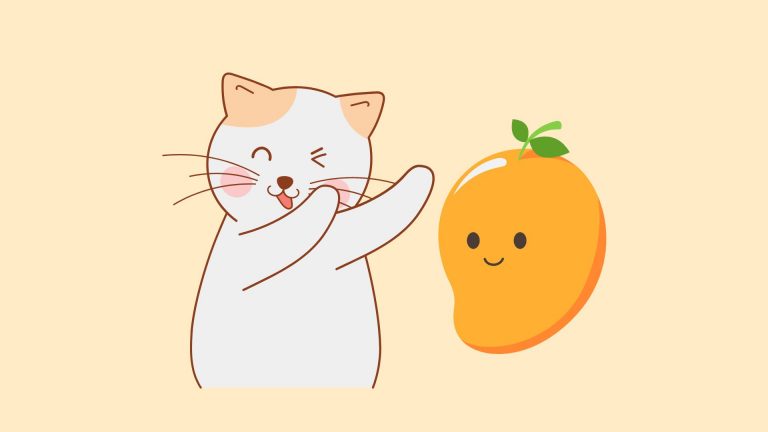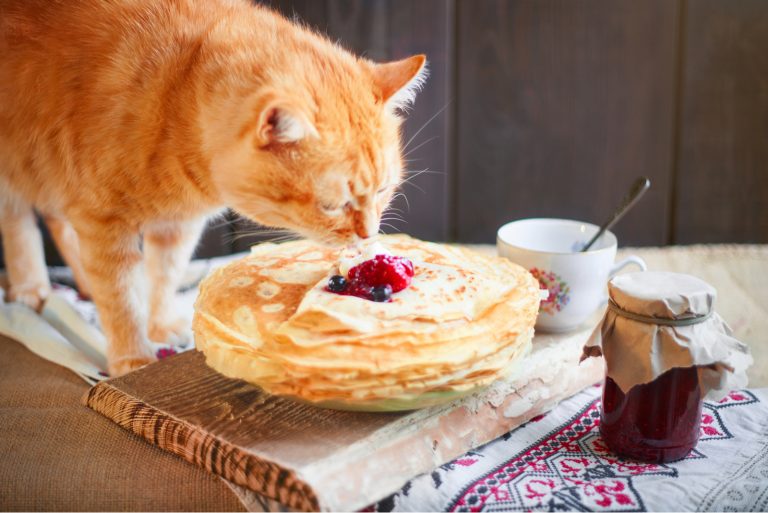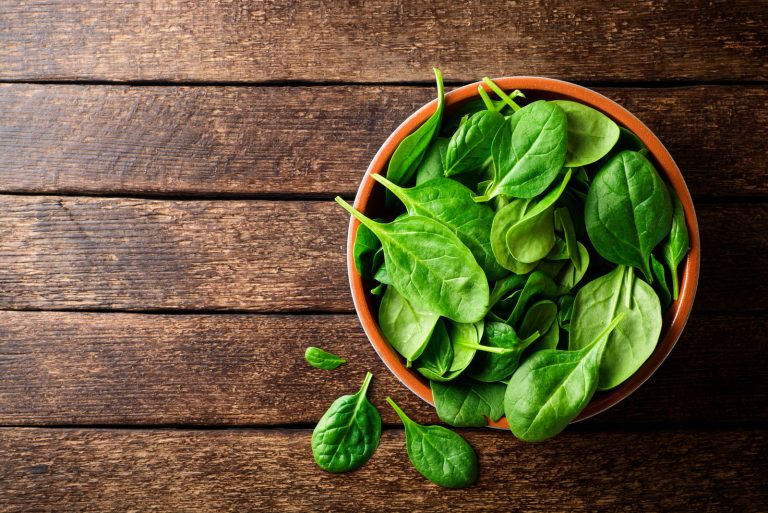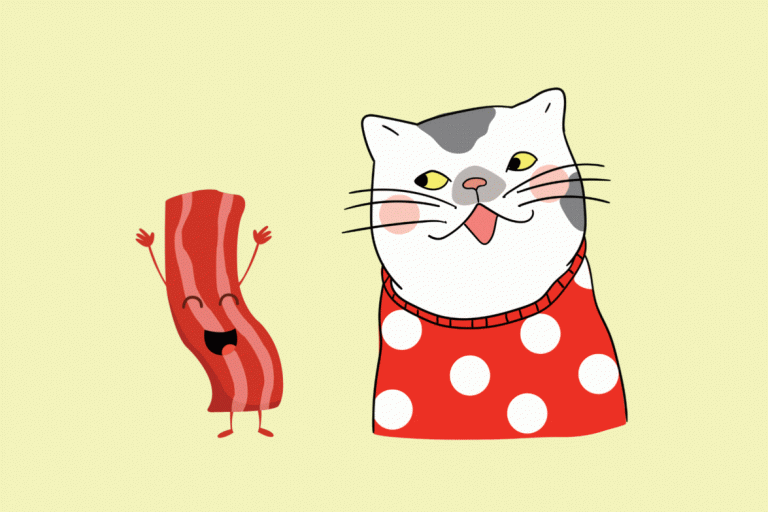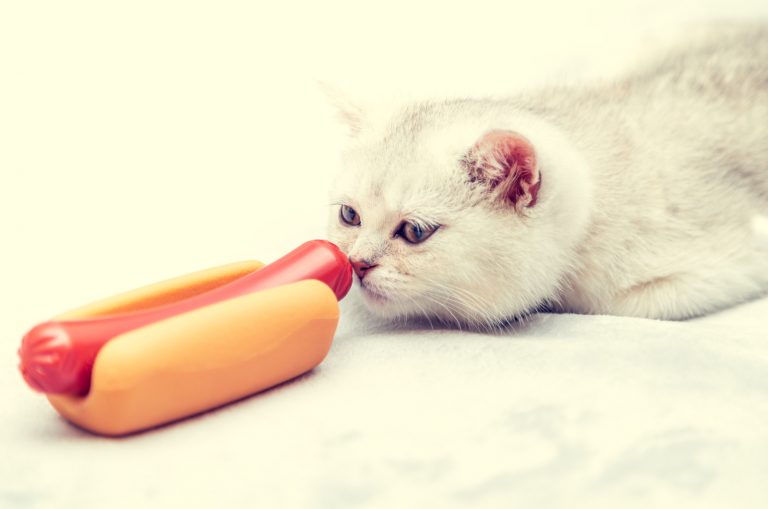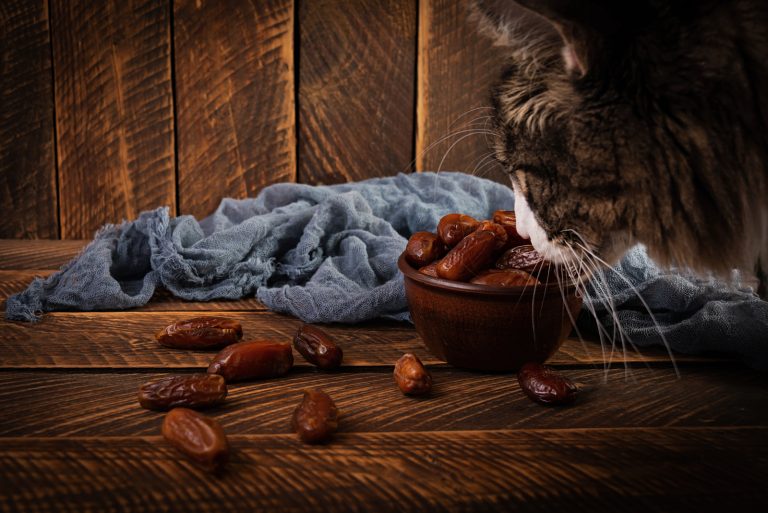Top 5 Choices Of Homemade Cat Food To Gain Weight
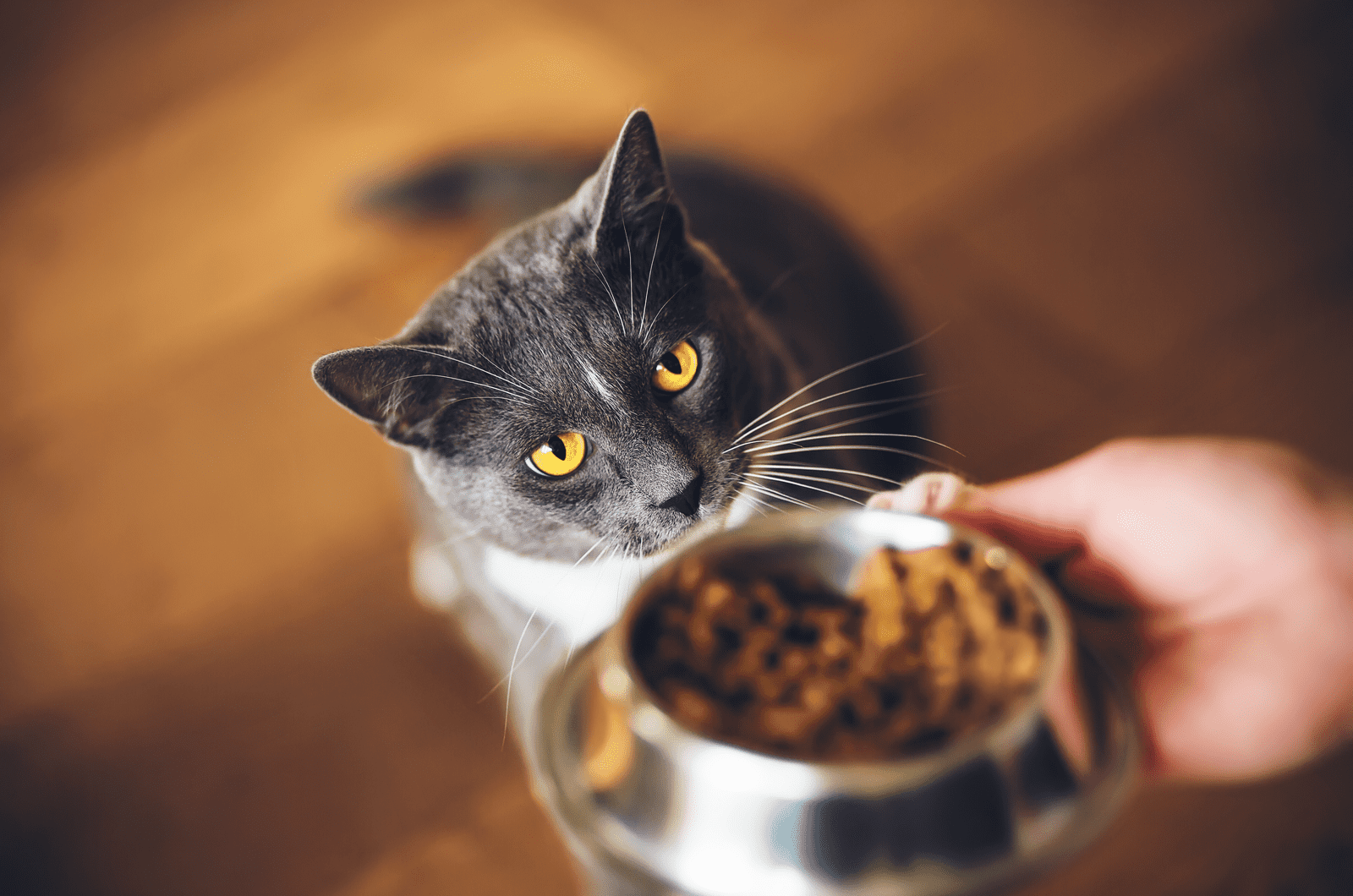
Did your cat lose some weight recently? Or maybe you’ve just rescued a skinny stray cat? Either way, you may now need some ideas for homemade cat food that will make your feline friend big and strong quickly.
No need to worry – I got you covered! There are a lot of different food options that will bring your cat’s weight right where it needs to be!
A cat being underweight, as you already know, can be a huge health issue and it needs to be resolved as soon as possible. One of the things you can do to help your cat is to prepare some (hopefully delicious) meals your cat will love eating.
I am sure your cat will get bigger and healthier in no time, so continue reading to find out the best homemade cat food to gain weight.
Homemade Cat Food To Gain Weight: 5 Healthy Options

If you notice that your cat is looking a bit skinny recently, your first reaction might be to jump into a high–calorie food search right away – but that is not the best thing to do.
Before anything else, you need to find out WHY your cat is losing weight/ has lost some weight. It is not normal for cats to be losing weight or be underweight in the first place, so I suggest getting to the root of it before jumping into a search for foods that will make your cat gain weight.
So, after you’ve found out what’s making (or what made) your cat skinny and you’re treating the primary health issue, you can look into these five homemade cat meals that will make your cat strong again!
1. Unseasoned Meat
Cats are obligate carnivores, meaning their diet is supposed to be high in meat–derived protein. Meat is an absolute must in cat nutrition. But which type of meat can a cat eat?
Cats can essentially eat all types of meat, which includes:
🐾 Chicken
🐾 Turkey
🐾 Beef
🐾 Pork
It is best to give plain cooked meat, while fried meat is not the best option because it contains a larger amount of oil than your cat can deal with. All meat should be unseasoned, because oils and herbs do not sit well with your cat’s stomach.
To learn more about whether cats should have processed meat, go to Happy Whisker’s articles on can cats eat hot dogs and can cats eat chicken nuggets.
When it comes to raw meat such as raw chicken liver, for example, it can be given – but it is not recommended to do it often (while some avoid it all together).
How To Prepare Cooked Meat For Your Cat
1. Purchase ground meat, which is much easier for your cat to eat
2. Put meat in a pot and add water – the mass should have a stew–like consistency
3. Cook (simmer) at the right temperature (different meat needs different temperature) and do not stir
4. Slow cooking at the right (low) temperature makes the meat tender
5. When the meat is cooked (it usually takes about 30-45 minutes), it will be in a semi-solid form
6. Break up the mass with a fork and mix it
7. Give it to your cat alongside other food items, or just as a snack (meat alone being as a meal is not recommended)
Also, cats can eat both boneless and meat containing ground bones. You can purchase meat with bones if you have a food processor or a grinder at home. After fully mixing the bones with the meat, you can continue following the steps described above.
Benefits Meat Provides For Cats
There is a reason meat makes up a large part of a cat’s diet – they need it to survive.
Meat provides cats with essential nutrients, such as amino acids (like taurine) and vitamins (like vitamin A).
In a cat’s diet, veggies will never replace meat and a plant–based diet is a huge no–no for cats. So, make sure to provide your cat with enough meat in their diet!
An Important Note Regarding Raw Meat
Giving your cat raw meat is a gamble and it is usually recommended to avoid it completely.
It is possible that the meat contains harmful bacteria that would be killed if the meat was cooked. But if given uncooked, it can create problems for your cat’s digestion and overall health.
Of course, it is not a rule that raw meat contains bacteria in 100% of cases. You can find recipes online that include raw meat and people recommend them.
Raw meat containing bacteria is simply a possibility, but I wouldn’t take any chances. You would not eat raw chicken yourself, right? So why give it to your cat?!
Can You Keep Your Cat On An All–Meat Diet?
Absolutely not! Even though cats need meat in their diet, it cannot be the only thing they’re eating. Meat contains some nutrients cats need – but definitely not every nutrient your cat needs.
Your cat will lack many vitamins, minerals, and other nutrients that meat cannot provide. So it’s best to give your cat meat, alongside other cat food.
2. Rice
Rice is perfectly safe for cats to consume, but only in moderate amounts. It is not an essential part of their diet as it is not meat–derived. It simply does not contain the nutrients meat can provide.
Nevertheless, it is healthy for a cat to eat rice once in a while as it provides dietary fiber which is very good for cats suffering from diarrhea or an upset stomach. Rice is a high–calorie food, which is good for your feline friend that needs to gain weight.
It should not be given as the sole meal ingredient, but rather with some type of meat. Your cat might like cooked rice, a piece of boiled egg, and some boiled chicken blended together. Blended food is much easier for your cat to eat.
Benefits Of Rice
Rice contains many vitamins and minerals, such as potassium, magnesium, selenium, iron, zinc, and B vitamins (folic acid, thiamine). It also contains dietary fiber, which has its health benefits.
It is good for gaining weight (for both humans and cats), especially alongside chicken.
An Important Note Regarding Rice
Rice should not be given too often as it contains a lot of carbohydrates.
Your pet’s food should not contain a lot of carbohydrates as it can cause weight gain, diarrhea, and/or bloating in cats. In general, a cat’s diet should be relatively grain-free, as grains contain a lot of carbs.
You might also find this article interesting: Can Cats Eat Pasta? Wait A Meow-Ment!
3. Oats
Oats are a safe and healthy meal option for weight gain, but also in a “normal” diet. Oats should be prepared with water and not with milk, as adult cats do not handle lactose well.
Half a cup of oats with one cup water should be simmered slowly until cooked, which should take about 8–10 minutes. Allow it to cool and then serve it to your kitty.
Benefits Of Oats
They are high in carbs which will provide your cat with extra calories. But oats also contain a higher amount of protein and fat compared to other grains, which is exactly what your cat needs, especially when gaining weight.
Oats contain a lot of fiber, antioxidants, vitamin E and B, and minerals such as iron, zinc, and selenium.
An Important Note About Oats In Your Cat’s Diet
I mentioned that oats are high in both proteins (amazing for cats) and carbs (not so amazing for cats).
So take into consideration that oats are a high-calorie cat food and should not be a daily meal, especially because carbs are not the best choice for your pet.
4. Fish
Fish are a great addition to your cat’s diet, but it should not be the main thing your cat eats. As you already know, cats love eating fish and will not mind you giving them any of the following:
🐾 Sardines
🐾 Tuna
🐾 Salmon
🐾 Mackerel
🐾 Trout
Baked, grilled, or boiled fish – it doesn’t matter. The only thing that matters is that the fish is cooked.
Benefits Of Fish
Fish contains a lot of omega–3 and omega–6 fatty acids and D and B2 vitamins. It is rich in calcium, magnesium, iron, and other minerals your cat needs.
It’s great for eyesight and the cardiovascular system. Fish oil can be great for senior cats, especially those suffering from arthritis and joint inflammation.
An Important Note About Fish In Your Cat’s Diet
Fish should not be given to cats on a daily basis. Even though fish is healthy, too much of it can cause mercury poisoning. Fish contains mercury which is accumulated by eating other fish.
So even though your cat absolutely loves tuna – it should not be consumed daily!
Also, fish does not contain all the nutrients needed for a proper cat diet, so it should only be given a few times a week.
Related: Can Cats Eat Crab? Read On To Find Out
5. Eggs
Eggs are a very healthy part of a cat’s diet, as they contain a large amount of protein and fat.
Scrambled eggs are an easy homemade cat food recipe, as well as boiled eggs.
Eggs are loaded with both fat and protein making them a great homemade cat food for weight gain. But don’t season the eggs in any way, as it’s not good for your cat’s tummy.
Considering that you want your feline friend to gain weight, do not separate the egg yolk from the egg white, as both parts are good calorie sources.
You can serve it alongside some meat, such as a bacon strip. Eggs don’t have to only be a breakfast meal for cats, you can serve it as lunch too!
But do not make it a daily component of your cat’s diet. They should be eaten in moderation. It is also suggested to give your cat only a small amount of egg, not the entire thing. Also, it should be served with other food, such as meat.
Benefits Eggs Offer
Eggs are a great source of protein for both cats and humans. Both egg white and egg yolk contain proteins, so eggs are a great option for your cat.
An Important Note Regarding Eggs
Never give your cat raw eggs! Raw eggs may contain bacteria, such as Salmonella or E. Coli, so make sure to always cook your egg before giving it to your cat.
Also, some cats might be allergic to some parts of eggs, so make sure your cat is not one of them.
5 Benefits Of Feeding Your Cat Homemade Food
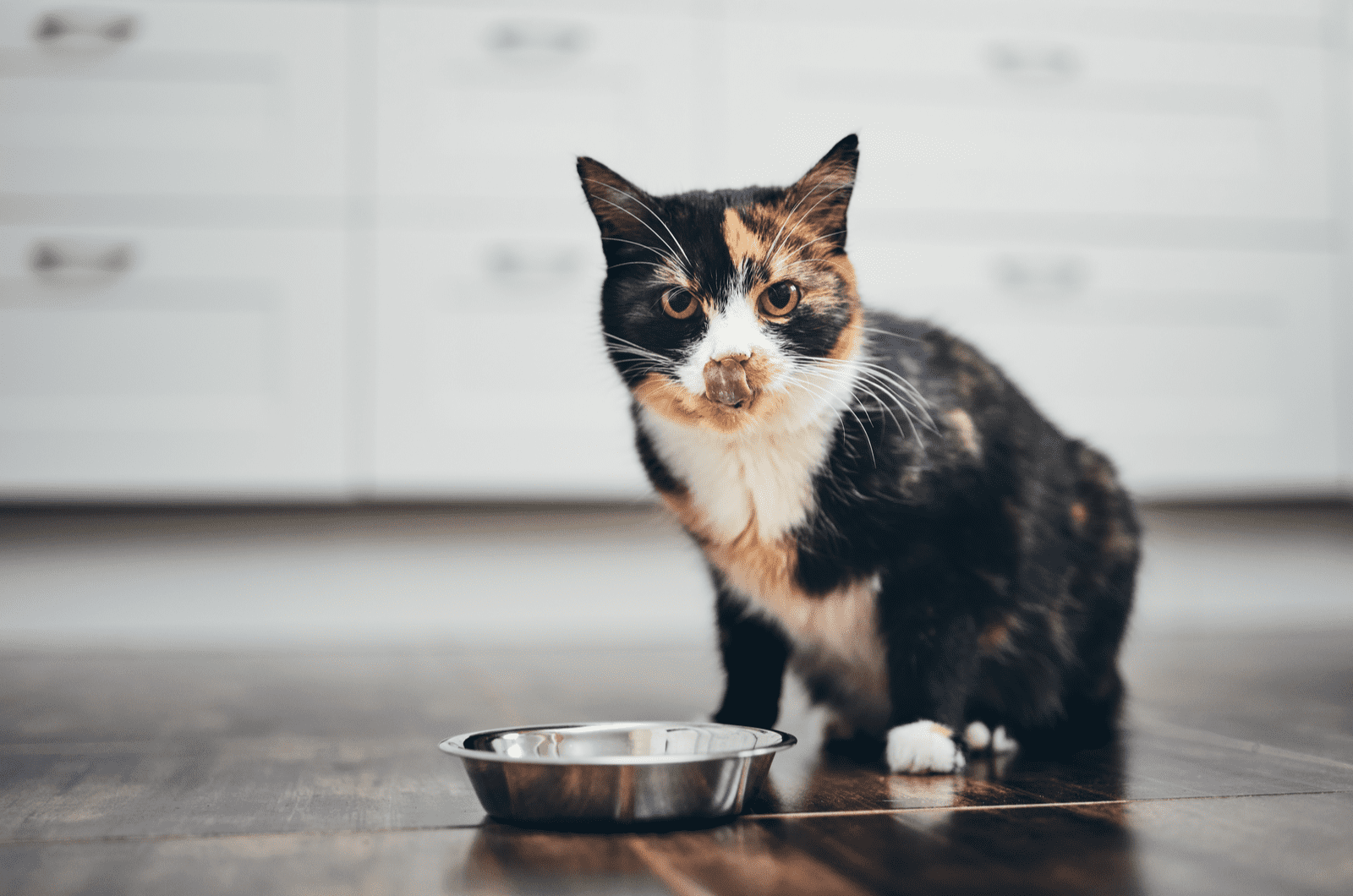
1. You’re In Charge Of The Ingredients
The greatest benefit of homemade food, in general, is the fact you know exactly what’s in it. If your cat has specific dietary needs, homemade food is the best option as it gives you full control over the ingredients.
2. There Are No Low–Quality Components
This is true unless you add them, which I’m sure you won’t. There are many components in canned and dry food that offer no nutritional value to your cat.
Their role is only there to provide the texture, for example. So by making homemade meals, you avoid unnecessary items in your cat’s diet.
3. There Are No Chemical Preservatives
Dry and especially canned food need to stay edible for quite some time. You already know food spoils easily, which is something food manufacturers do not want.
In order to prevent that from happening, they put preservatives in their foods. Even though most of them are not necessarily bad for your cat’s health, they definitely aren’t healthy either.
4. Homemade Meals Don’t Lead To Weight Gain
This is only true if you prepare them correctly. The most important thing is to avoid carbohydrates as much as possible. Cats that exclusively eat only kibbles have a weight–gain problem because they contain a larger portion of carbs.
By making meals for your cat, you’re in complete control of your cat’s weight.
5. Homemade Meals Will Not Hurt Your Wallet Much
The benefit of making homemade meals is that they’re a bit less expensive than always buying canned and dry food. Items in those meals are often things you’re eating for lunch, so sparing a bit for your cat does not cost you much.
Can A Cat Only Eat Homemade Food?
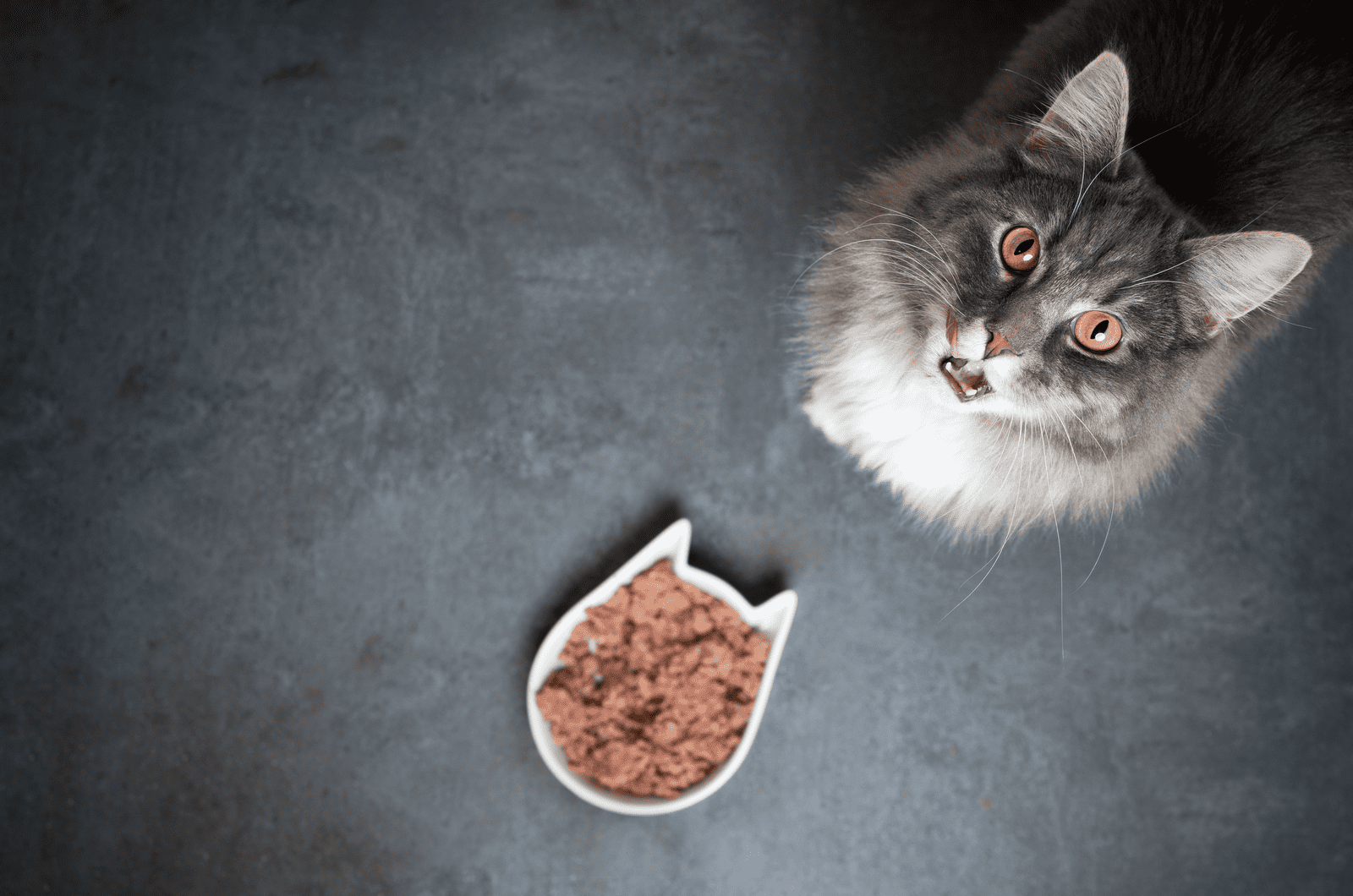
No, a cat’s perfect diet cannot be composed only of homemade food. Homemade food can only be an addition to store–bought food.
The reason for this is the following: Manufacturers know exactly what a healthy cat diet looks like and they make their products according to it.
Homemade cat food recipes, no matter how healthy they are, will never provide your cat with all necessary nutritional requirements.
If you decide to make homemade food a majority of your pet’s diet, make sure to provide the necessary vitamin and mineral supplements, such as calcium supplements and vitamin B and D supplements, as well as fish oil (such as salmon oil).
That’s why a balance has to be made between homemade and store–bought food.
Just Giving Your Pet High–Calorie Meals Is Not Enough
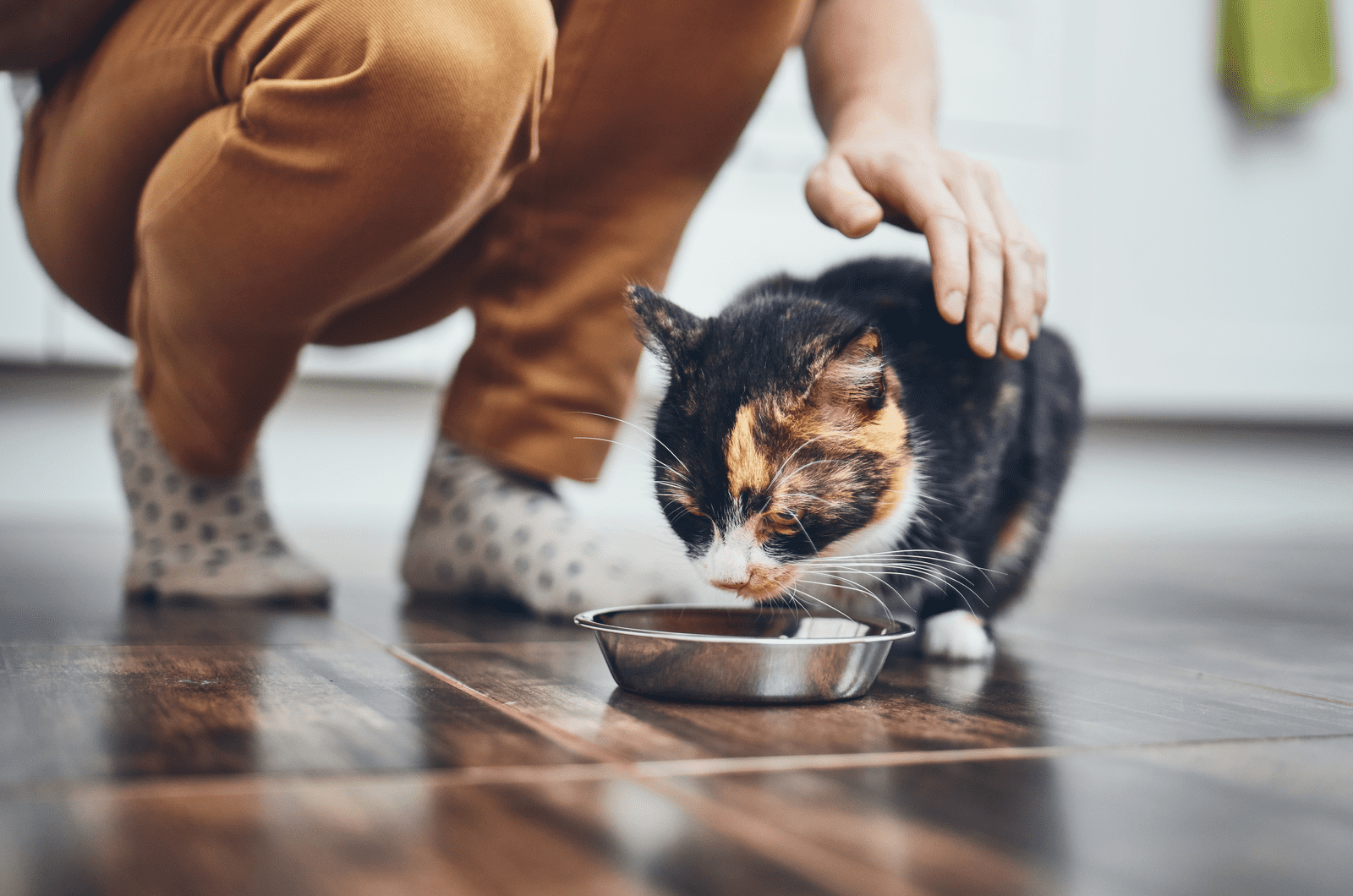
If your feline friend needs to gain weight, simply putting a larger amount of food in their food bowl is simply not enough.
Some cats might struggle with a complete loss of appetite and they will not gain weight even if you give them all the food you have.
Below are several tips that can make your cat overcome the apparent loss of appetite and make eating appealing again.
7 Tips For Helping Your Cat Gain Weight
1. Switch Things Up
Giving your cat the same food every day is not going to encourage their appetite. Imagine if you were given the same food all the time – you would eventually get sick of it, even if it’s the healthiest and the most beneficial food for you.
2. Make Sure The Food Is Appealing
If your cat is struggling with loss of appetite, you will need to provide extra–delicious food that also smells amazing. The smell of food will make your cat want to eat it more, hopefully overcoming the loss of appetite.
Spices are on the list of smells cats hate, so make sure all food you make is unseasoned.
3. Quality Over Quantity
It’s better to give your cat a smaller amount of high quality meals packed with calories, than a large amount of high–calorie food that’s not so high quality.
High quality food might be more expensive, but it’s definitely worth every penny. It improves digestion and increases the overall health state of your cat.
Related: The Best Cat Food For Persian Cat: Yummy Guide
4. Not Every Food Is Good For Cat’s Weight Gain
You might think of giving your cat more carbohydrates in order to facilitate weight gain. And indeed, carbohydrates will make your cat gain weight – but in the most unhealthy way possible.
A healthy cat’s diet should be very low in carbohydrates, but high in protein and fats. So forget about carbohydrates and focus on food packed with protein and fats.
5. Try Warming Up Your Cat’s Food
Warm food might be more appealing to your cat. If your cat finds the food more appealing, it will eat more of it, which is exactly what we want.
6. Give Your Cat More Smaller–In–Portion Meals
Some cats prefer eating smaller portions three or four times a day, compared to two large meals a day. It can be a way of “tricking” your cat to eat more.
7. Introducing Snacks
By introducing healthy snacks (such as bell peppers or celery) a bit more than usual, you will provide your cat extra caloric intake, which is exactly what we want.
Can You Feed Your Cat Canned Food For Weight Gain?
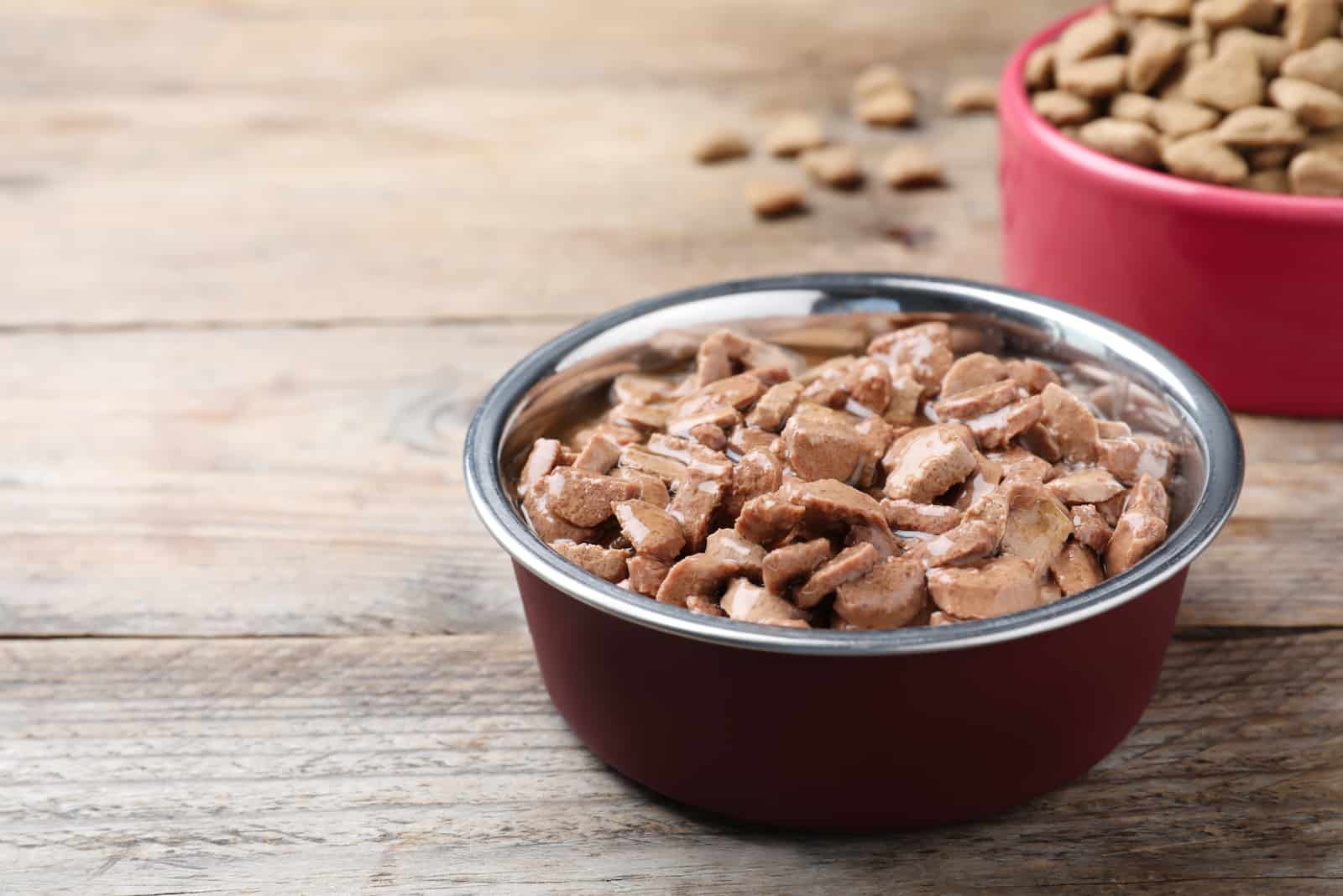
Yes!
If you don’t have time for making homemade meals – that’s perfectly okay! Canned food (wet cat food) combined with dry food is a good option as well.
When buying canned food for your cat, make sure to read the label! This is what to look for:
🐾 food high in protein
🐾 food high in fat
🐾 food low in carbohydrates
There are canned food options that are specifically made for cat weight gain. Also, kitten food is a good source of protein and fats for your cat, so check those out too.
Is Canned Food Better Than Dry Food In This Case?
Both types of food have their benefits and drawbacks, so let’s initially consider both of them.
Benefits Of Dry Cat Food
🐾 tastes good
🐾 has a lot of calories
🐾 easy to use
Drawbacks Of Dry Cat Food
🐾 does not offer moisture that’s very important in a healthy cat’s diet
🐾 not a good option for cats with dental issues
🐾 contains low quality protein sources (corn, wheat)
🐾 contain larger percentage of carbohydrates compared to canned food
Benefits Of Canned Cat Food
🐾 cats love the smell of it (it encourages them to eat it)
🐾 good taste
🐾 provides moisture
🐾 lower percentage of carbohydrates than dry food
Drawbacks Of Canned Cat Food
🐾 does not contain as much calories as dry food
🐾 more expensive
Cats absolutely love the smell and taste of canned food, which encourages them to eat it.
What’s The Verdict?
It’s best to mix both dry food and canned/wet food. It’s not recommended to give your cat just one type of food.
Dry and wet food can balance each other, as they both provide benefits but also have their drawbacks.
Dry food usually contains more calories than canned food. In the same weight, canned food contains a much larger percentage of moisture (water). So, you can give kibbles (that will provide the calories) and canned food (that will provide moisture).
In this way, you get the best of both worlds, while also providing your cat with different meal options.
2 Reasons A Cat Is Losing Weight Or Is Skinny
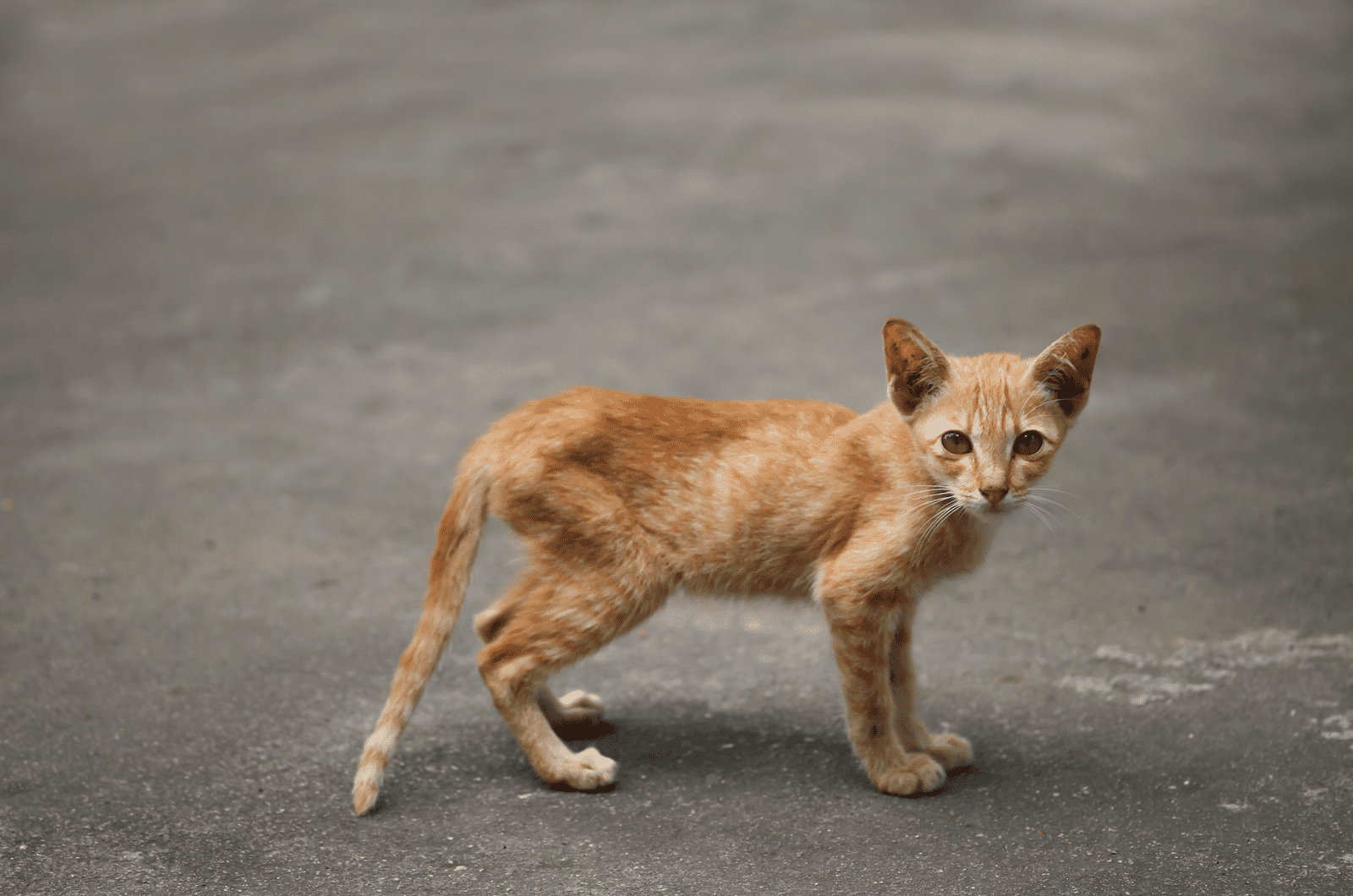
There aren’t a lot of reasons a cat might be losing weight – there are two and they are very straight–forward. Luckily, there are ways to handle them!
1. Malnourishment
Even though I know you’re making sure your pet is happy and satisfied, you might miss some clues that your cat is hungrier than you thought. You might be giving your cat regular and nice meals, but maybe the portion size is smaller than your cat needs.
If you notice your cat’s food bowl is absolutely licked clean after every meal and they are always staring at you while you’re eating, it can be a sign your cat needs larger food portions.
But, this is most likely not the case. The most probable case is that your cat simply lost their appetite and is not eating enough on their own. This is most likely caused by an underlying health issue that needs to be resolved.
Another option is that you’re dealing with a newly–adopted stray cat and its weight is caused by rough conditions of living on the streets.
2. Disease
In a vast majority of cases, a cat being underweight is caused by an apparent loss of appetite. And naturally, if a kitty is not eating, it will start losing weight. There are many causes of appetite–loss, and almost all of them need veterinary aid.
Here are some possible causes of loss of appetite in cats:
🐾 An infection (either bacterial, viral, fungal or parasitic)
🐾 Diabetes
🐾 Hyperthyroidism
🐾 Respiratory disease
🐾 Kidney disease
🐾 Liver disease
🐾 Dental disease
🐾 Pancreatic disease
🐾 Urinary tract disease
🐾 Anxiety and stress
🐾 Many other diseases and conditions
Whichever the cause may be, it’s best to visit a vet’s office and get to the bottom of it.
How Do You Know If Your Cat Needs To Gain Weight?
The answer for this is given by using:
🐾 a scale
🐾 a body condition score
You know how to use a weighing scale, but you might not know what’s the perfect weight for your cat. This largely depends on the cat’s breed, but it’s a bit harder for mixed cats. That’s why a body condition score is used.
Body Condition Score
It is a system of giving your cat a specific score that characterizes your cat’s weight, which ranges from one to nine. The score is given by inspecting a cat from above and from the side. By doing so, you assess the cat’s weight and if it’s a healthy one for your cat.
A score of one means the cat is severely underweight, while a score of nine means severe obesity. Four or five is the perfect score, meaning the cat’s weight is just right for them.

Photo from: cwvet.co.uk
Should You Be Worried About Your Cat’s Weight Loss?
Rapid weight loss is a huge tell–tale sign that something is wrong with your cat’s health. It is not something that should be taken lightly, so I strongly suggest visiting a veterinary office and they will surely find out what’s wrong.
Loss of appetite is a very common symptom for many different diseases or conditions.
As you saw earlier in this article, there are a lot of potential causes of your cat’s weight loss. Considering you most likely cannot find out which one is it and what to do about it, visiting a doctor of veterinary medicine (a DVM) is the best choice in this case.
Is It Okay For Older Cats To Be Skinny?
No, it is not. There is no such thing as a healthy, but very skinny, old cat, even though people often disregard an older cat’s weight loss by saying “Oh, that cat is just old”.
Weight loss for any cat of any breed and any age is not considered normal nor healthy. With older age, muscle–degradation in older cats is normal, but is it not an excuse to allow your older cat to actually become underweight and contribute it only to their age.
Just because a cat is older, doesn’t mean it’s “normal” for them to be underweight.
In Conclusion
I am sure you pet owners will do everything you can to help your little feline friend struggling with being underweight. The first thing you need to do is find out what is making your cat lose weight and then start working on gaining it back.
The most important thing is your cat having a balanced diet. Cat owners – do not jump into high-calorie cat food just for the sake of increased calorie intake. Underweight cats need to gain weight steadily and not very rapidly.
Homemade cat food recipes are good for your cat gaining “healthy weight”. These contain a lot of human foods, so you can make your cat a meal at the same time you’re making your meal.
A proper diet should be composed of a lot of unseasoned meat, as animal protein is absolutely necessary for your cat’s wellness. Avoid a raw diet, as raw cat food carries some risks (having harmful bacteria) you don’t need to take.
Meat is probably the best homemade cat food to gain weight, but do not make it the only food in your cat’s diet.
I am sure your pet will be perfectly healthy, just pay a quick trip to the vet, have patience and the weight will come in no time!

